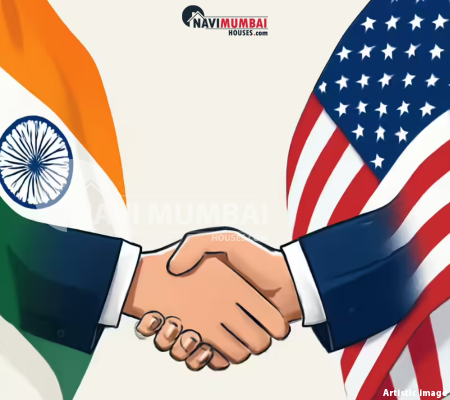
Diplomatic and economic watchers will be watching closely: India and the United States are now expressing optimism about concluding the first tranche of their Bilateral Trade Agreement (BTA) by the fall of 2025. Government sources indicate a high-level Indian team is set to visit Washington imminently to resolve outstanding issues.
After months of back-and-forth, this moment marks a pivotal test of momentum, trust, and substantive concessions between two of the world’s largest economies.
What the Current Developments Reveal
Delegation & Negotiation Plans
-
Commerce Secretary Rajesh Agrawal is expected to lead the Indian delegation to the U.S. this week, with the mission to close the first tranche of the BTA.
-
The talks will focus on market access, regulatory cooperation, energy trade, and technology transfers, as per government sources.
-
Earlier this year, both nations had agreed to aim for this first tranche by fall 2025.
Why This Tranche Matters
-
A “first tranche” typically packages less controversial / easier-to-agree sectors (e.g., some industrial goods, energy imports, regulatory alignment) to build momentum.
-
Concluding an initial tranche helps build credibility, investor confidence, and paves the way for deeper, more complex negotiations (e.g., agriculture, services, intellectual property).
-
It signals to domestic stakeholders (industries, exporters, investors) that a binding roadmap is being established, reducing uncertainty.
Potential Benefits & Stakes
If this first phase is sealed:
-
Exporters gain clearer access to U.S. markets, with reduced tariffs or trade barriers in selective sectors.
-
Investors and industry get improved predictability, regulatory alignment, and pathways for collaboration or joint ventures.
-
Energy & tech sectors could see increased flow of U.S. energy, technology, and clean energy solutions.
-
Diplomatic leverage: India can rebalance existing tariff pressure, negotiate concessions or waivers, and drive long-term trade normalization.
However, there’s a risk that delays, disagreements, or external disruptions may push the timeline or require renegotiation of terms.
What to Watch & Be Prepared for
Round announcements & communiqués
Monitor the joint statements and press releases from both governments post-delegation.
Sector-wise treatment
Which sectors make it into the first tranche — likely industrial goods, energy, and some regulatory alignment. Sensitive sectors like agriculture may be deferred.
Tariff/duty adjustments
Watch for tariff cuts, reciprocal concessions, or rollback announcements in import/export duties.
Investment and capital flow agreements
New MOUs, protections, or frameworks for U.S. investment into India, especially in energy, tech, and infrastructure.
Fallbacks or delay signals
Pay attention if external factors (e.g., U.S. government shutdowns, political disruptions, trade policy shifts) force postponement or rebalancing.
Next-phase agenda
After the first tranche, deeper issues like services, agriculture, IP, and digital trade will emerge as the harder part of the negotiation.
Conclusion
India and the U.S. appear to be at a crucial junction: the ambition to conclude the first tranche of their trade agreement by fall 2025 is in sight, backed by a high-level Indian mission heading to Washington. Success would mark a milestone in bilateral trade relations — establishing clarity and momentum. But the path won’t be without challenge: negotiated alignment, external pressures, and sectoral resistance are real risks.
If the first tranche goes through, it sets the stage for deeper bilateral integration. For now, all eyes are on the upcoming negotiations and whether both sides can deliver before the autumn deadline.
Visit Us: Navimumbaihouses.com or Call Us @ 8433959100
The post India, U.S. Aim to Seal Initial Trade Pact Before Autumn Deadline appeared first on .

